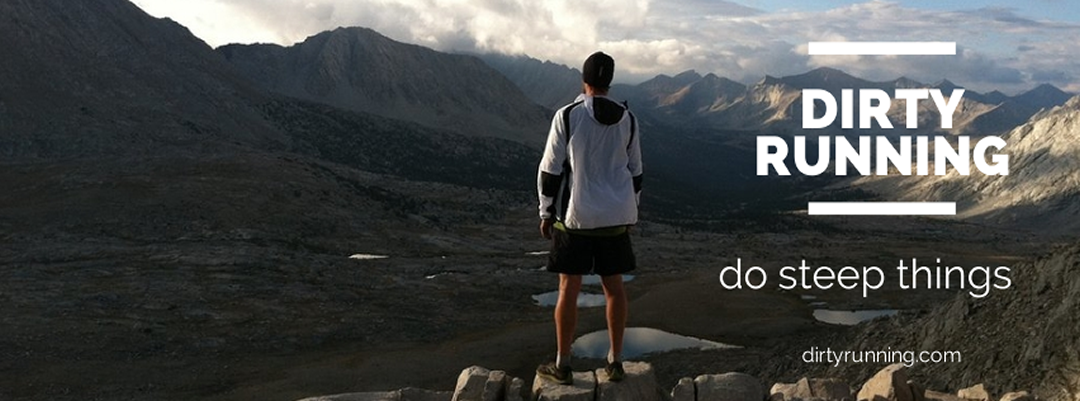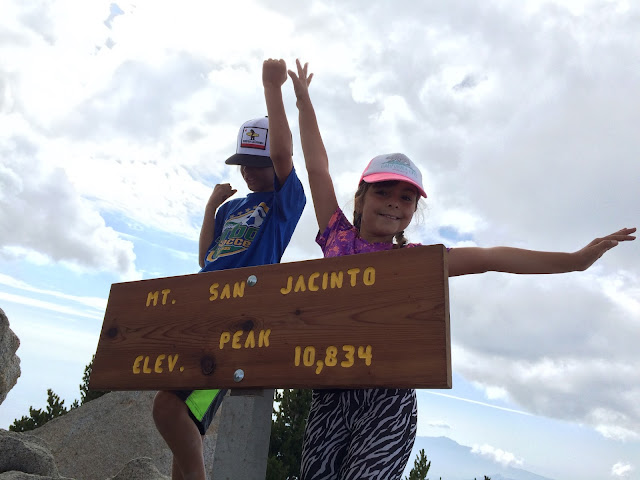 |
| Wellman's Divide |
5 Tips on Overnight Backpacking with Kids
If you’re reading this you probably already realize the benefits of being outside. I try to get out on the trails as much as possible, but when I’m gone, it feels like about half the time I’m out there, I’m thinking of my family back home. When I did the High Sierra Trail in August, I made it a goal to start bringing my family along on overnight backpacking trips. One of the first things I did when I returned from that trip was to block out a couple days on the calendar for a trip with my kids. I picked an overnighter in San Jacinto because it’s close, and I know the trails up there pretty well. It’s also a fairly easy summit for someone that is in pretty good shape, and the view from the top is amazing. It received a glowing Yelp! review from none other than John Muir.
The view from San Jacinto is the most sublime spectacle to be found anywhere on this earth!
— John Muir
The trip couldn’t have gone any better. The kids had a great time, and I spent half the time choked up at how great it was to be out there with them, and the other half amazed at how well they were getting along with each other. My son is ten and my daughter is eight. They love each other, and are either best friends, or at each others’ throats because of a perceived sigh or eye roll. In the mountains, it was all love, cooperation, and laughter.
Their goal was to summit the 10,834 foot peak, but my goal was just to get them out there in the wilderness, carrying a pack and enjoying a couple of days of unplugged beauty. For me, the summit was secondary.
This was our first overnighter, but we have done plenty of dayhikes and camping trips, and there are a few things that I got right, making this trip one of my favorites.
Involve the kids in the planning process
Even though the trails were well marked, and I have been on the route a number of times, I still bought a topo map and let them trace our route to the summit with their small fingers, adding up the mileage sections and picking a campsite.
The first day would be two miles from the tram to Round Valley campsite. I figured this would be a good, short intro to hiking with a pack. We ordered the packs online, and they helped pick them out. We went with the Gossamer Gear Quiksaks because they are lightweight, big enough to carry their sleeping bags and pajamas, and they would double as a good daypack that I would carry with our food and water for the hike to the summit on the 2nd day.
The next day we would hike 4 miles up to the summit, then another 4 miles back to our campsite where we stored the packs, then another two miles to the tram. This was a long day, but I figured we’d go as far as we could and if it was no longer fun for the kids, we’d turn around.
We made a trip to REI a couple days before the trip. They picked out their meals, choosing a big 3-serving bag of mac and cheese for dinner. The first night, they found a big rock to share and took turns spooning the cheesy goodness out of the foil backpacker’s meal. I stood behind them just watching them take turns digging their spoons in the foil patch, sun setting over the meadow, enjoying the quiet of dusk descending on the mountain.
Have a good story
They always want a story at night, and I’ve told so many that I have run out of good ideas. So, I start telling them the story of a boy named Daniel, a boy who moved from New Jersey to Southern California with his mom and he got bullied because he was the new kid in school. He loved karate, but his karate was no match for the Cobra Kai. Enter a nice, old, Japanese maintenance man, Mr. Miyagi.
“Dad, is this the karate kid?”
“Maybe. Want me to stop?”
“No.”
So, I spent the next 15 minutes telling the story of Daniel and his crush on Ali and the creative teaching methods of Mr. Miyagi. They loved the story, and my 8-year-old daughter hung on every word. The first thing she did when we got home the next day was to search Netflix for The Karate Kid.
Let them share in the work
It takes me about 5 minutes to set up a tent. It takes me about 30 minutes to set up a tent with help. That 30 minutes is well spent.
I also could have carried everything in my pack, but it was important to them to help with the load, so they each carried their own packs with their sleeping bags, flip flops, pajamas, and a bottle of water. It wasn’t a total of more than five or six pounds, but they were contributing. It made the hike to and from the campsite more difficult for them, but their sense of accomplishment far outweighed the difficulty.
I let the kids find the route. I let them read all the signs and choose which direction to go. There were a couple of mistakes, but they learned quickly. We also took turns setting the pace. I’ve run with people that always have to lead, and it’s annoying as hell. There’s an advantage to leading, all of a sudden you feel a little stronger, and you can also control the pace, slowing down if you’re tired and speeding up if you feel good. It’s important to share that responsibility and advantage with everyone. Kids like to go out fast when they’re in front, but they quickly learn to slow down and keep a consistent, all-day pace.
Teach them how to squat
There are few things as liberating as peeing off the side of a mountain. It’s easy for a guy, but hiking with my daughter is different. I expected it to be some kind of natural thing that she would just know how to squat and pee without soaking her tights, shoes and legs. Once she got it down, it was great. I won’t get into the number two details, but I had to teach them how to dig a hole and bury their poop without getting too dirty. It was more or less successful, or at least I was more successful than they were, but they learned a valuable life skill. Oh yeah, Purell is essential.
There was also a lot of farting talk on the trail. My son loved learning about altitoots, and in that respect it wasn’t much different than the trail talk that I’m used to.
Don’t force your experience on them
Sometimes you want to pass on these experiences, and you want others to have the same experience that you have whether it be a love for the mountains, or even something like a book, a movie, or a restaurant (no matter how hard I try, I can’t get my wife to recognize the genius of Kenny Powers). You can’t have that experience for them, and it makes it worse to push it on them. I lowered my expectations with the kids. After all, twelve miles round trip at an elevation of nearly 11,000 feet is pretty tough for anyone, especially coming from sea level, and I have seen grown men in pretty good shape turn around on the route up to San Jacinto. Some friends even joked about bringing my own summit sign and busting it out at Wellman’s Divide (which is only 1 mile up from where we camped, and offers a pretty amazing view). They wouldn’t know the difference. I didn’t make my own summit sign, but turning around there was definitely an option.
My kids had other thoughts. While my goal was to enjoy the journey, the summit was way more important to the kids than it was to me. Towards the top of the climb, there’s this long, hot, exposed section and their spirits were low. I mentioned turning around, and that it had been such a great day and they had both done so well. They both looked at me like I was speaking a different language, and they gave me the look that all men and insane people know. They came to summit.
 |
| The Summit Push |
We worked over the boulders at the peak, my son leading the way as I helped my daughter over some of the more difficult features. When they got to the top it was pure joy, and fist pumps, and hands raised in the air. We all looked around and I pointed out some of the other peaks, including the only mountain in Southern California that was higher than where we stood, Mt. San Gorgonio. We watched the planes fly below us and the clouds moving at eye level. We were alone up there, so I told them that on the count of 3 we should yell and scream as loud as we could.
“What should I say,” my son asked.
“You can say whatever you want. I’m going to howl like a wolf, because you are my wolf pack and I just feel like howling.”
So, we let loose until our throats cracked. Then we sat and ate the bison and bacon bars that we had been saving for the summit. They were delicious, but everything tastes better above 10,000 feet.
As we were making the long hike back to the tram, my son couldn’t stop smiling and talking about how he had conquered the mountain. He was using the language of a warrior, and I thought it would be a good teaching opportunity. I started lecturing him about how I viewed it as more of a bonding with the mountain, and about how you can never really conquer nature, it will be here longer than us, and the most we can do is respect nature and share it. I stopped short of making him hug the nearest tree when I saw that his smile was fading and his eyes had that look that kids’ eyes get when they are thinking about anything other than what you are currently saying.
“Yeah, bud, you conquered it, good job.”
And the smile came back and he climbed the nearest rock and jumped off. The respect will come, but it will come on his terms, and it’s my job to make sure that they have every opportunity to nurture that love.
On the drive home, my son told me he had a hiking plan for us. Next year, he wants to climb the highest peak in Southern California, San Gorgonio. The following year, Whitney, then the next year, the JMT. I look forward to howling from the tops of many more mountains with them.








































